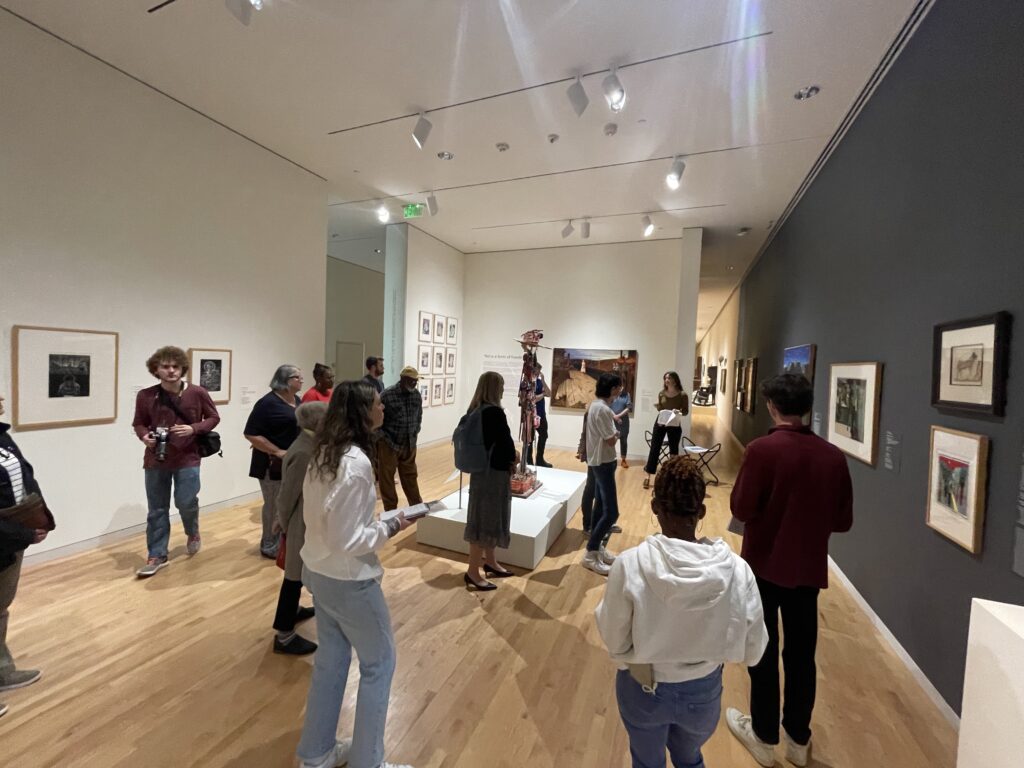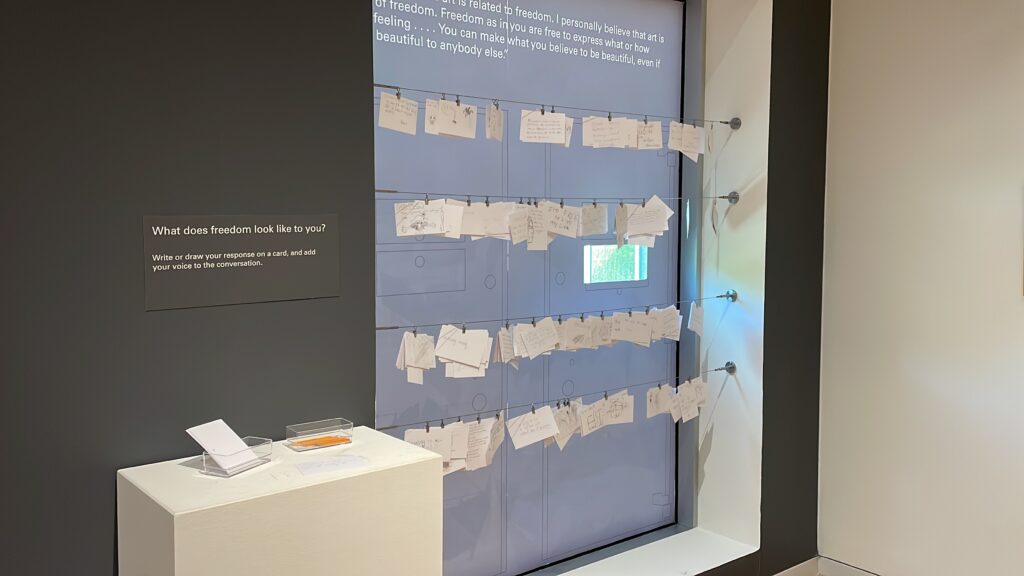Byline: Sarah Sims
Multimedia


The Georgia Museum of Art hosted a live curator talk, “Art is a form of freedom,” featuring the first-ever joint education project involving the incarcerated women at Whitworth prison and students at the University of Georgia. The exhibit showcased artworks from the museum’s collection and written responses from the incarcerated women.
Common Good Atlanta partnered with the University of Georgia to bring education into the prison using artworks to elicit creativity and freedom with responses from the incarcerated women. UGA Lecturer Caroline Young taught English and UGA art instructor Don Chambers taught art history in the prison.
Callan Steinmann, the curator of the exhibit and associate curator of education at the GMOA, said that “Blue Lady” by Amalia Amaki was one of the women’s favorites because it brought a splash of color to the dull prison walls and they felt she “spoke to them.”
In a letter to the community from the Whitworth women that now hangs on the wall of the exhibit, they wrote,“This is a place where we can come together and judge the artwork instead of each other.”
Young created a writing for social justice class: The prison writing project in summer of 2022, which culminated in this exhibition. The project came to fruition in 2021 and gave Young hope that more such projects could occur in the future.
Young’s students chose the artwork for the women at Whitworth to analyze. Young’s students researched the collection to find artists of diverse backgrounds. Steinmann said this was a challenge given that the majority of art in the museum’s collection was created by white men.
In the curator talk at the GMOA, people gathered to learn more about how the women responded to the interactive prompts. Bennie Roberson attended the exhibition with his wife because his son has been incarcerated.
“I already knew all the talent they have; they just got sidetracked,” Roberson said. “I think it is a great idea to show that they can be redirected.”
The women at Whitworth prison created interactive responses and thoughts throughout the class to speak on personal experiences. Steinmann read the responses and took the most powerful, captivating answers, which are now showcased in the exhibit.
Young has been involved with incarcerated students since teaching at Georgia Tech and she remains emotional about this project. Young said her students began the class fearful of the prisoners and ended by connecting with them.
“I was just bowled over at the shift in attitudes that happened,”said Young.
The professors say they are hopeful that they will be able to continue offering collaborative classes. The exhibit will be open until July 2 and there is also an online version that is showcased on the GMOA’s website.
Social Media
Why I Wrote the Story:
I chose to write this story because its was the explanation of a social project that the University of Georgia teamed up with Common Good Atlanta to teach art in the Whitworth Women’s Prison and their responses to talked about art works. I learned how to find specific details and accurately report the story for my Diversity and Equity beat.